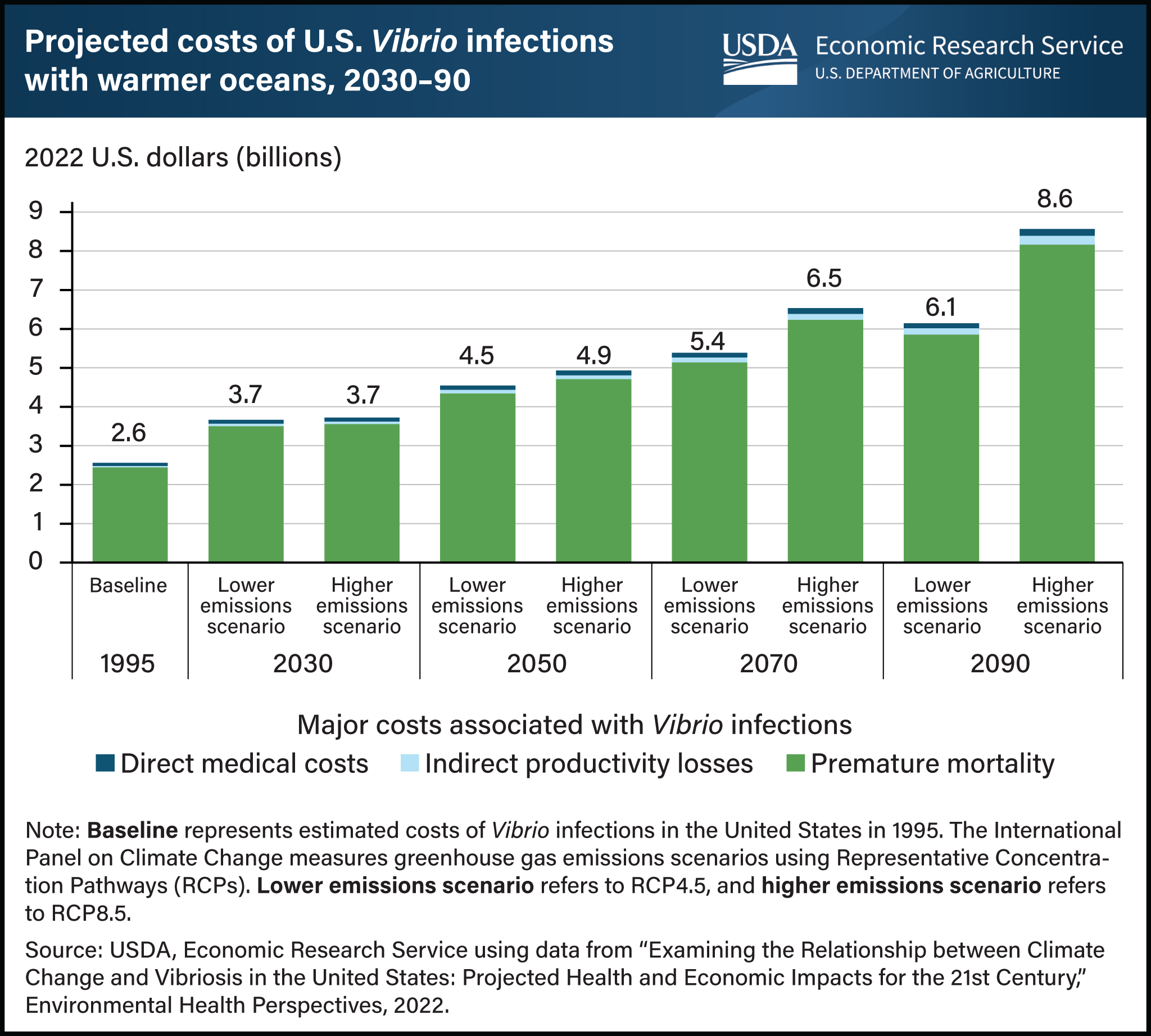Costs of U.S. <i>Vibrio</i> infections projected to increase as seas warm from climate change
- by Sandra Hoffmann
- 9/12/2023

Vibrio are bacteria that thrive in warm brackish and marine waters. Many Vibrio can cause human illness through foodborne and waterborne exposure. Climate change is expected to expand the range and season of Vibrio infections as sea surface temperatures become warmer. Researchers from USDA’s Economic Research Service (ERS), U.S. Environmental Protection Agency (EPA), and the private consulting firm Industrial Economics Inc. recently used data on sea surface temperatures and non-cholera Vibrio infection surveillance data to project how much climate change could increase the incidence of these infections in the United States. ERS’ per-case cost estimates of foodborne illnesses were used to project the costs of additional illnesses, including medical or treatment costs, productivity losses (the value of time affected by illness), and the value of a statistical life (an economic measure of preventing premature mortality). Results show that higher sea surface temperatures associated with moderate increases in greenhouse gas concentration (lower emissions scenario) may cause U.S. Vibrio infections (not including cholera) to increase 50 percent by 2090 relative to 1995. If global warming is not mitigated (higher emissions scenario), then such cases are projected to increase by more than 100 percent in that time period. The annual total cost of these illnesses more than doubles from nearly $2.6 billion in 1995 to $6.1 billion in 2090 (in 2022 dollars) under a lower greenhouse gas emissions scenario and more than triples to nearly $8.6 billion under the higher emissions scenario. Across both scenarios, about 95 percent of total costs are attributable to deaths caused by Vibrio infections. This chart appears in the ERS Amber Waves article, Climate Change Projected To Increase Costs of U.S. Vibrio Infections, published in June 2023.

